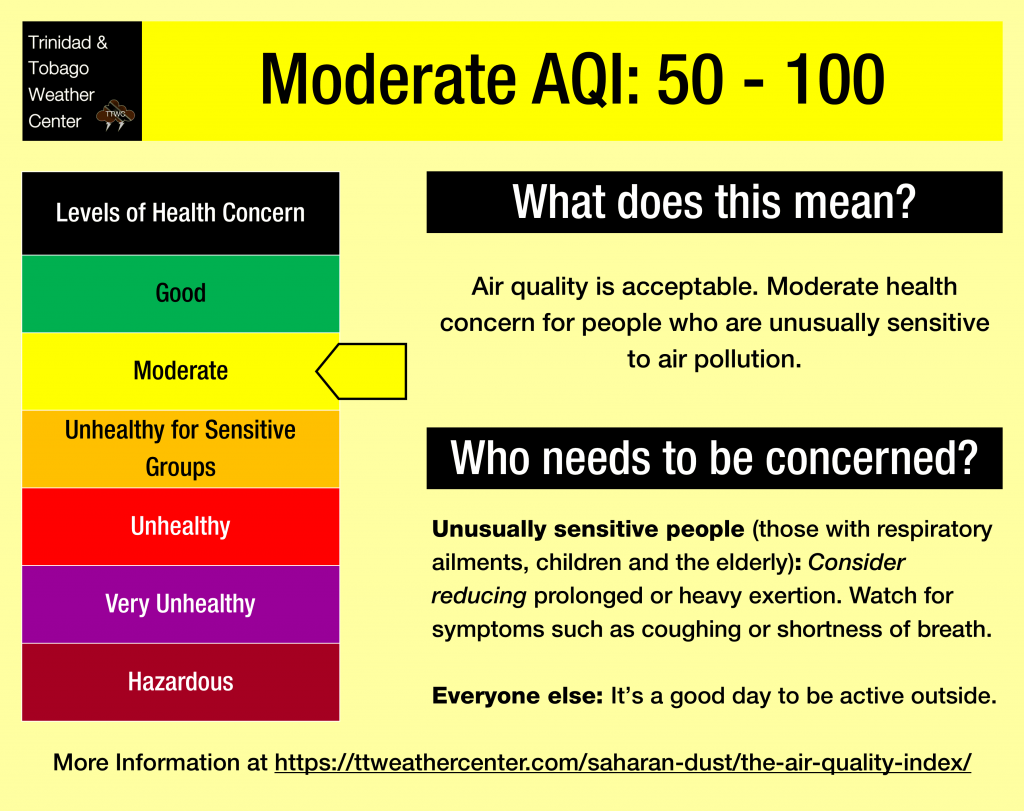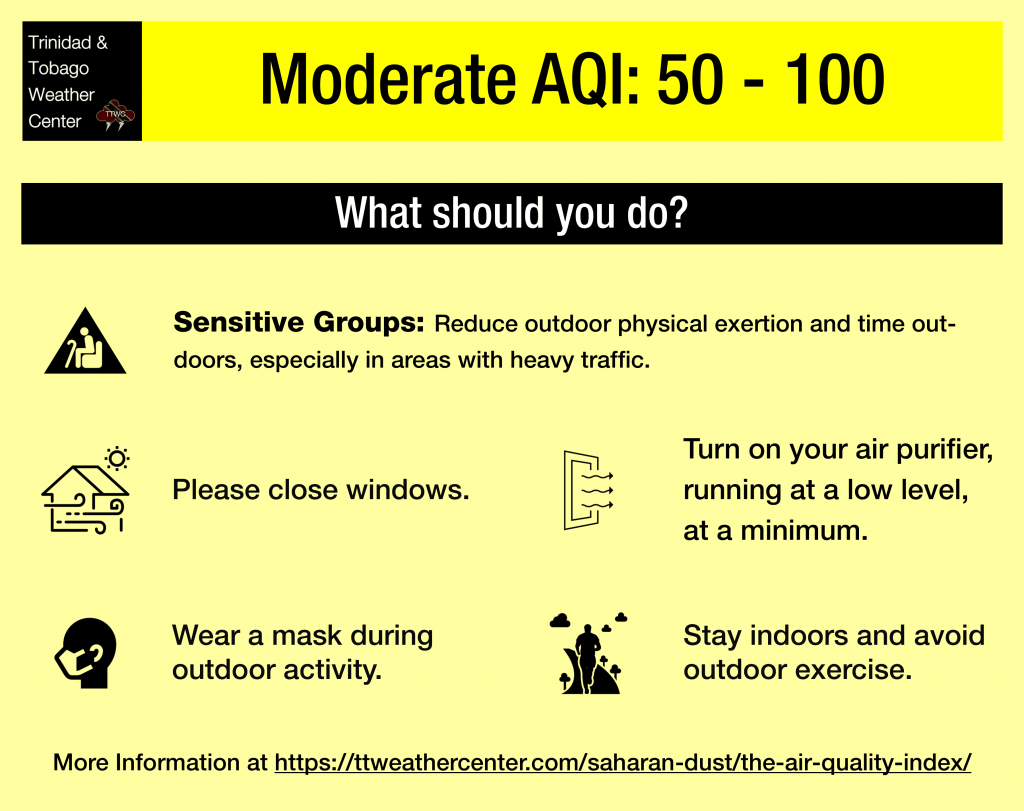Forecast models indicate Saharan Dust will remain across Trinidad, Tobago and the Windwards through the middle of May, though low-latitude Tropical Waves may bring brief and marginal improvements on Saturday into Sunday, May 6th and 7th, 2023.
What you need to know
— Saharan Dust Surges: A moderate concentration surge of Saharan Dust is present across Trinidad and Tobago today, with dust levels remaining elevated into the weekend. Another higher concentration surge is forecast by Sunday, May 7th, 2023, following the passage of Tropical Wave 01, with elevated concentrations into next week, even with the passage of Tropical Wave 02 sometime Monday night into Tuesday.
— Impacts: Through the next seven to ten days, air quality levels across Trinidad and Tobago are forecast to remain between good and moderate, occasionally dipping to levels that are unhealthy for sensitive groups during high-traffic periods, in the vicinity of bushfires and between May 7th and 10th, 2023.
— What Should You Do: Sensitive groups may need to take the necessary precautions, particularly during high-traffic periods and in the vicinity of bushfires.
Current AQI Levels Across T&T

Based on information from official air quality monitoring stations from the Environmental Management Agency (EMA), San Fernando and Point Lisas are reporting moderate air quality levels, while at Arima, good air quality is reported but based on Ozone levels. The station located at Signal Hill, Tobago, is not reporting data.
These measurements are based on PM2.5 (particulates the size of 2.5 micrometers and smaller, usually associated with increases in Saharan Dust, vehicle exhaust, and smoke) and PM10 particulates.
Over the last 24 hours, visibility remained unaffected by Saharan Dust and smoke at the A.N.R. Robinson International Airport at Crown Point, Tobago, and the Piarco International Airport, Trinidad.
Saharan Dust Forecast

Ongoing Surge Lingering Through May 15th
Saharan Dust levels are set to remain at elevated levels through the forecast period, with two surges set to move across the country over the next ten days. The first now moving across the country with moderate concentrations.
By Sunday, May 7th, 2023, following the passage of Tropical Wave 01, a moderate concentration surge is forecast to arrive, with dust levels at higher concentrations remaining present until overnight Tuesday, May 9th, 2023, following the passage of Tropical Wave 02. Some improvement is forecast by Thursday, May 11th, 2023, with another moderate surge arriving by Friday, May 12th, 2023.
Another decrease in dust levels is forecast by May 15th, 2023.
Through the next seven to ten days, air quality levels across Trinidad and Tobago are forecast to remain between good and moderate, occasionally dipping to levels that are unhealthy for sensitive groups during high-traffic periods, in the vicinity of bushfires and between May 7th and 10th, 2023.
What does this mean for you?


The air quality is forecast to be lowered primarily during high traffic periods, particularly between 6:00 AM and 9:00 AM and again from 3:00 PM through 6:30 PM, as well as during times of blowing smoke and dust from bushfires.
We’re in a period where the Intertropical Convergence Zone and tropical waves and occasional tropical cyclones may shield Trinidad and Tobago from the Saharan Dust events. While Tropical Waves play a notable role in moving dust across the Atlantic and the Eastern Caribbean, these periodic tropical waves also improve air quality.
The concentration of the dust that follows the wave depends on its strength as it moves off the West African Coast. This is because of stronger thunderstorms across Central Africa. As strong winds move downward and outward from these thunderstorms, the wind kicks up dust as it moves across parts of the Saharan Desert and transports it into the upper atmosphere. This “plume” of dust follows the axis of the wave as it progresses westward into the Atlantic.
Dust that makes it into the upper levels of the atmosphere can then get transported across the Atlantic Ocean. The plumes of dust eventually affect the Eastern Caribbean.
Larger, more concentrated plumes of Saharan dust begin in April and continue through November.











